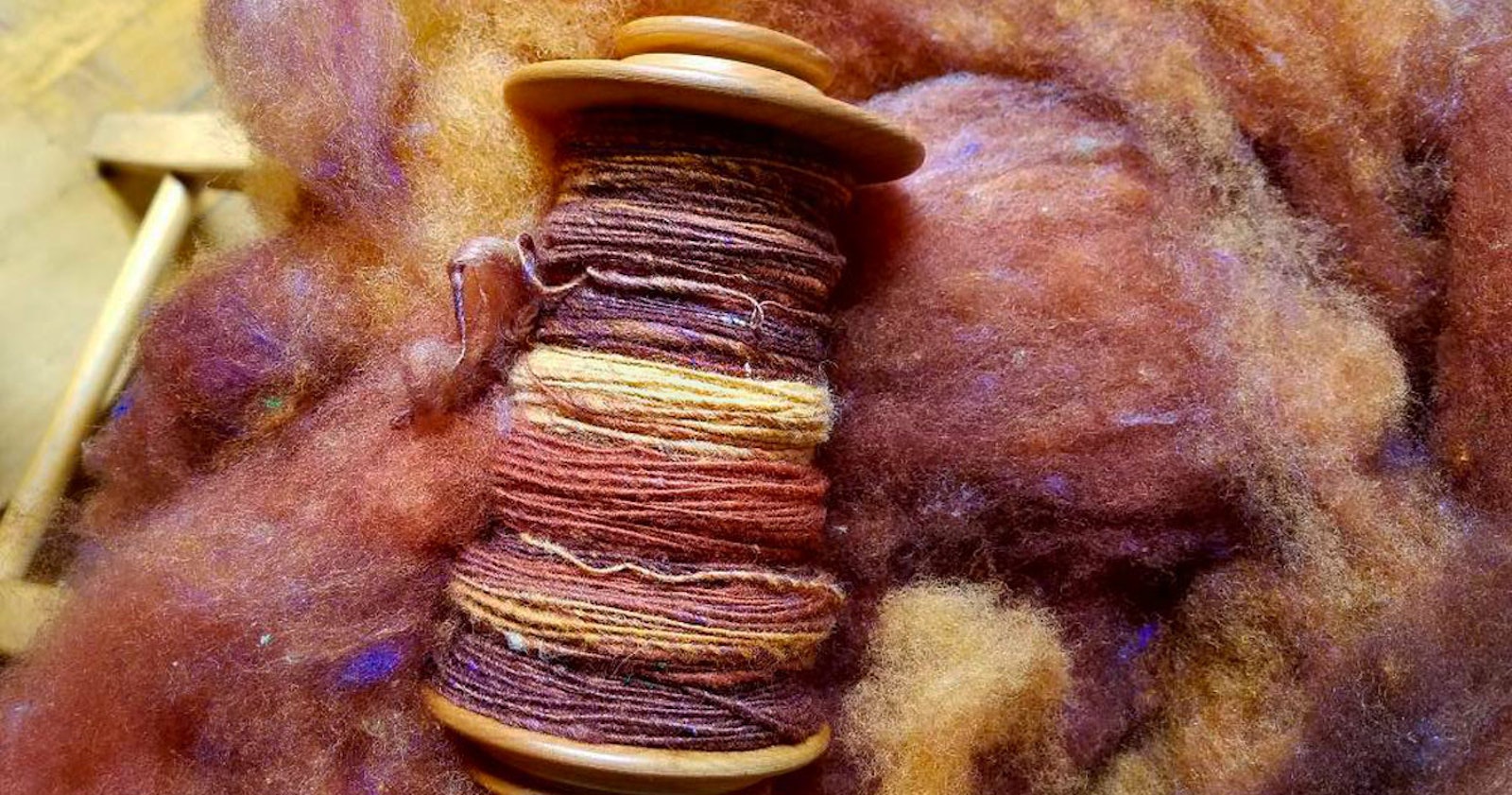Debbie Held goes behind the scenes at Dakota Carding and Wool in South Dakota, and Andrea Mielke Schroer walks us through some strategies for spinning the beautiful carded clouds produced by Dakota Carding and Wool. Here is an excerpt of Andrea’s article, answering the common question, “what is a carded cloud?”
Plump rovings and tidy rolags usually come to mind as classic carded preparations, but what is carded cloud? The type of carded cloud I have been seeing for decades consists of washed, carded fibers that come in no particular form or order. To understand how fibers get into this so-called cloud form, we first need a little overview of how a carding mill prepares fibers for spinning. During commercial carding, fiber passes from one carding drum to another, a process that opens the fibers. These drums are usually several feet wide and arranged in a series of several large- and small-diameter drums. At the end of the carding machine, the fiber comes off the last drum in a thin web.

Fibers are passed between a series of large and small drums. Photo by Kate Larson
The type of fiber preparation is determined by what happens next to the carded web. The fiber may be wrapped around a smooth drum to form a batt, bunched up widthwise to create roving, split into many strips in preparation for a spinning machine, or simply gathered up into what is called cloud, usually by just pushing the thin web of fibers into a bin or bag.

Dakota Carding carded cloud ready for spinning. Photo by Kelly Knispel
Any type of fiber that can be carded can be made into carded cloud; it is not just for short-staple fibers. No additional preparation is necessary to spin it—just grab a chunk, attach to your leader, and start drafting.

